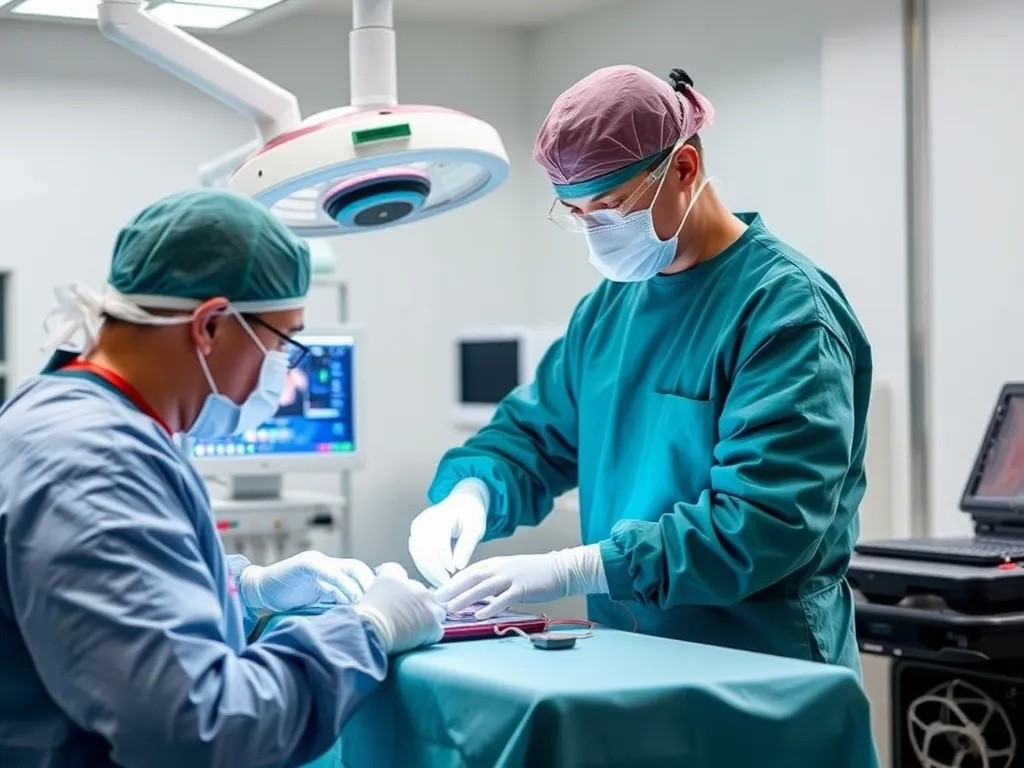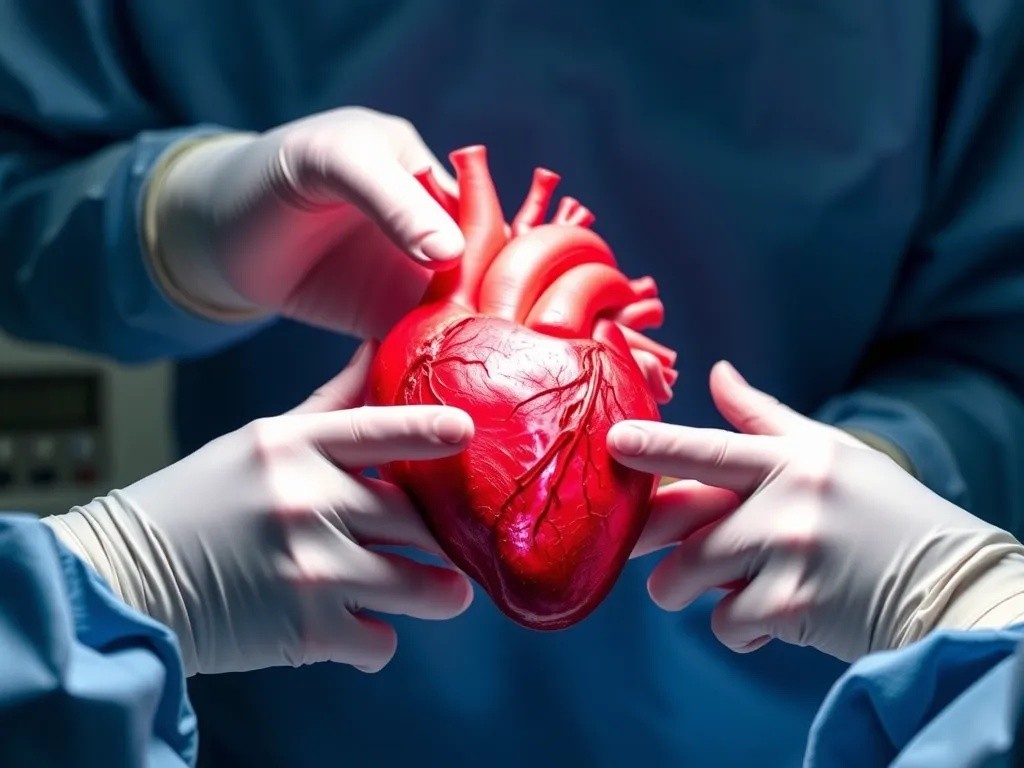In recent years, there has been a significant advancement in the field of Artificial Intelligence (AI) and Augmented Reality (AR). These technologies have become increasingly popular and have the potential to enhance virtual experiences in various fields such as gaming, education, healthcare, and...
Computer Learns to Repair Hearts During Surgery with Precision

Cardiac surgery demands extraordinary precision, where millimeters can mean the difference between success and tragedy. An artificial intelligence system is now assisting surgeons in the operating room, learning to perform delicate heart repairs with accuracy that surpasses human capabilities alone. This technology is transforming cardiac care and saving lives that might have been lost with traditional surgical approaches.
The AI Surgical Assistant System
The technology combines advanced imaging, robotic instrumentation, and machine learning algorithms trained on thousands of successful procedures. During surgery, the AI processes real-time data from multiple sources, including high-resolution cameras, ultrasound, and monitoring equipment that tracks the heart's electrical activity and blood flow.
How the System Operates
Before surgery begins, the AI analyzes the patient's medical imaging to create a detailed three-dimensional model of their heart. This model identifies the exact locations requiring repair and plans the optimal surgical approach. The system factors in the patient's unique anatomy, existing conditions, and potential complications.
During the procedure, the AI guides robotic surgical instruments with sub-millimeter precision. It compensates for the heart's natural movement, adjusting tool position in real-time to maintain accuracy. The system can detect tissue characteristics that indicate healthy versus damaged areas, helping surgeons make informed decisions during critical moments.
Training the Surgical AI
Developers trained the system using data from over 10,000 cardiac procedures performed by leading surgeons worldwide. The AI learned to recognize patterns associated with successful outcomes and complications to avoid. Machine learning algorithms analyzed technique variations, identifying the most effective approaches for different types of repairs.
Continuous Learning Capability
Unlike static surgical protocols, the AI continues learning from each procedure it assists. After every operation, it analyzes outcomes and refines its techniques. This continuous improvement means the system becomes more effective over time, incorporating insights from the latest cases into its knowledge base.
Dr. Elena Rodriguez, a cardiac surgeon working with the technology, describes its evolution. "When we started, the AI was impressive but occasionally suggested approaches we questioned. Now, after assisting with hundreds of surgeries, it often identifies solutions we wouldn't have considered immediately. It's become a genuinely collaborative partner in the operating room."
Clinical Results and Patient Outcomes
Hospitals using the AI-assisted surgical system report remarkable improvements in patient outcomes. Complication rates have dropped significantly, and recovery times have shortened for many procedures.
Measured Improvements
- Surgical precision increased by 47 percent compared to unassisted procedures
- Complication rates decreased by 38 percent
- Average surgery time reduced by 22 percent
- Post-operative recovery periods shortened by an average of 4 days
- Success rates for complex repairs improved by 31 percent
These statistics translate into real-world impact. Patients who might have faced significant risks with traditional surgery now have substantially better prognoses. Complex cases that once challenged even expert surgeons can be approached with greater confidence.
Specific Surgical Applications
The AI system excels at several particularly challenging cardiac procedures. Valve repair requires extremely precise suturing to ensure proper function without causing leaks. The AI's steady, accurate movements result in better valve performance post-surgery.
Coronary Artery Bypass
Creating new blood vessel connections demands flawless anastomosis—joining vessels together. The AI assists with these delicate connections, ensuring proper alignment and secure attachment. Bypass grafts performed with AI assistance show improved long-term patency rates, meaning they remain open and functional longer.
Pediatric Cardiac Surgery
Children's hearts present unique challenges due to their small size and ongoing development. The AI's precision proves especially valuable in pediatric cases, where operating spaces measure just centimeters. Surgeons report that the technology makes previously high-risk pediatric procedures significantly safer.
The Surgeon's Perspective
Contrary to fears that AI might replace surgeons, the technology enhances rather than replaces human expertise. Surgeons maintain complete control and make all critical decisions, while the AI handles precise physical execution and provides real-time guidance.
Dr. James Patterson, chief of cardiac surgery at a major medical center, explains the partnership. "The AI doesn't diminish my role—it amplifies my capabilities. I bring experience, judgment, and adaptability. The AI contributes perfect steadiness, tireless precision, and instant analysis of complex data. Together, we achieve results neither could accomplish alone."
Reducing Surgeon Fatigue
Complex cardiac procedures can last many hours, during which surgeon fatigue becomes a concern. The AI maintains consistent performance regardless of procedure duration. This reliability allows surgeons to focus on decision-making rather than physical strain, potentially reducing errors caused by exhaustion.

Patient Stories
Robert Johnson faced a complex valve repair that conventional approaches gave only a 60 percent success probability. "My surgeon recommended the AI-assisted procedure," he recalls. "I was nervous about having a computer involved, but she explained it was like having the world's steadiest hands executing her expertise. The surgery went perfectly, and I recovered faster than anyone expected."
Eight-year-old Maria Gonzalez required correction of a congenital heart defect. Her surgeon used the AI system to navigate the intricate repair in her tiny heart. "The precision was crucial," her surgeon notes. "Human hands alone would have struggled with the scale involved. The AI made possible what would have been extremely difficult otherwise. Maria is now thriving with a properly functioning heart."
Addressing Concerns and Limitations
Despite impressive results, the technology faces challenges. Equipment costs remain high, limiting availability to major medical centers. Training surgeons to work effectively with the AI requires significant time investment. Healthcare systems must balance adoption costs against improved outcomes and potential savings from reduced complications.
Safety and Backup Systems
Multiple redundancies ensure patient safety if technical problems occur. Surgeons can instantly take manual control, and backup systems monitor the AI's decisions continuously. Independent safety algorithms watch for any unusual patterns that might indicate malfunctions. Throughout thousands of procedures, no serious adverse events have been attributed to system failures.
Regulatory Approval and Standards
Medical regulators have established strict guidelines for AI-assisted surgery. The technology underwent extensive testing and review before receiving approval for clinical use. Ongoing monitoring ensures continued safety and effectiveness as the system evolves.
Hospitals implementing the technology must meet specific requirements regarding surgeon training, equipment maintenance, and quality control. These standards help ensure consistent, safe application across different medical centers.
Expanding Applications
Success in cardiac surgery is driving development of AI systems for other surgical specialties. Researchers are adapting the technology for neurosurgery, transplant procedures, and minimally invasive operations. The fundamental principles—precise control, real-time analysis, and continuous learning—apply across surgical disciplines.
Training the Next Generation
Medical schools are incorporating AI-assisted surgery into their curricula. Future surgeons will train with these systems from the beginning, developing skills that integrate human judgment with technological precision. This shift promises even better outcomes as surgeons become increasingly adept at collaborating with AI partners.
Global Health Impact
As costs decrease and technology becomes more portable, AI-assisted surgery could extend advanced cardiac care to underserved regions. Telemedicine capabilities allow expert surgeons to guide AI systems remotely, bringing world-class surgical precision to hospitals that lack specialized cardiac surgeons.
This democratization of surgical expertise could dramatically reduce global disparities in cardiac care. Patients in rural or developing areas might access the same quality of treatment available at premier medical centers.
The Future of Cardiac Surgery
Ongoing research explores even more advanced capabilities. Future versions may predict complications before they become critical, allowing proactive intervention. Integration with patient monitoring systems could enable the AI to optimize surgical approaches based on each individual's real-time physiological responses.
Developers are working on autonomous capabilities for routine aspects of procedures, though human surgeons will continue overseeing all operations. The goal isn't replacing surgical expertise but augmenting it with precision and consistency that elevate care to new levels.
A New Era in Medicine
The emergence of AI-assisted cardiac surgery represents a fundamental shift in medical capability. By combining human expertise, judgment, and adaptability with machine precision, consistency, and analytical power, this technology achieves results that neither humans nor computers could accomplish independently.
For patients facing cardiac surgery, this innovation offers hope beyond what was previously possible. Procedures once considered extremely risky become safer and more predictable. Complex repairs that challenged the limits of human ability can now be performed with confidence. As the technology continues evolving and spreading, it promises to save countless lives and improve outcomes for millions of cardiac patients worldwide.
The future of heart surgery has arrived, and it's a collaborative effort between human skill and artificial intelligence—working together to mend the most vital organ with unprecedented precision and care.



